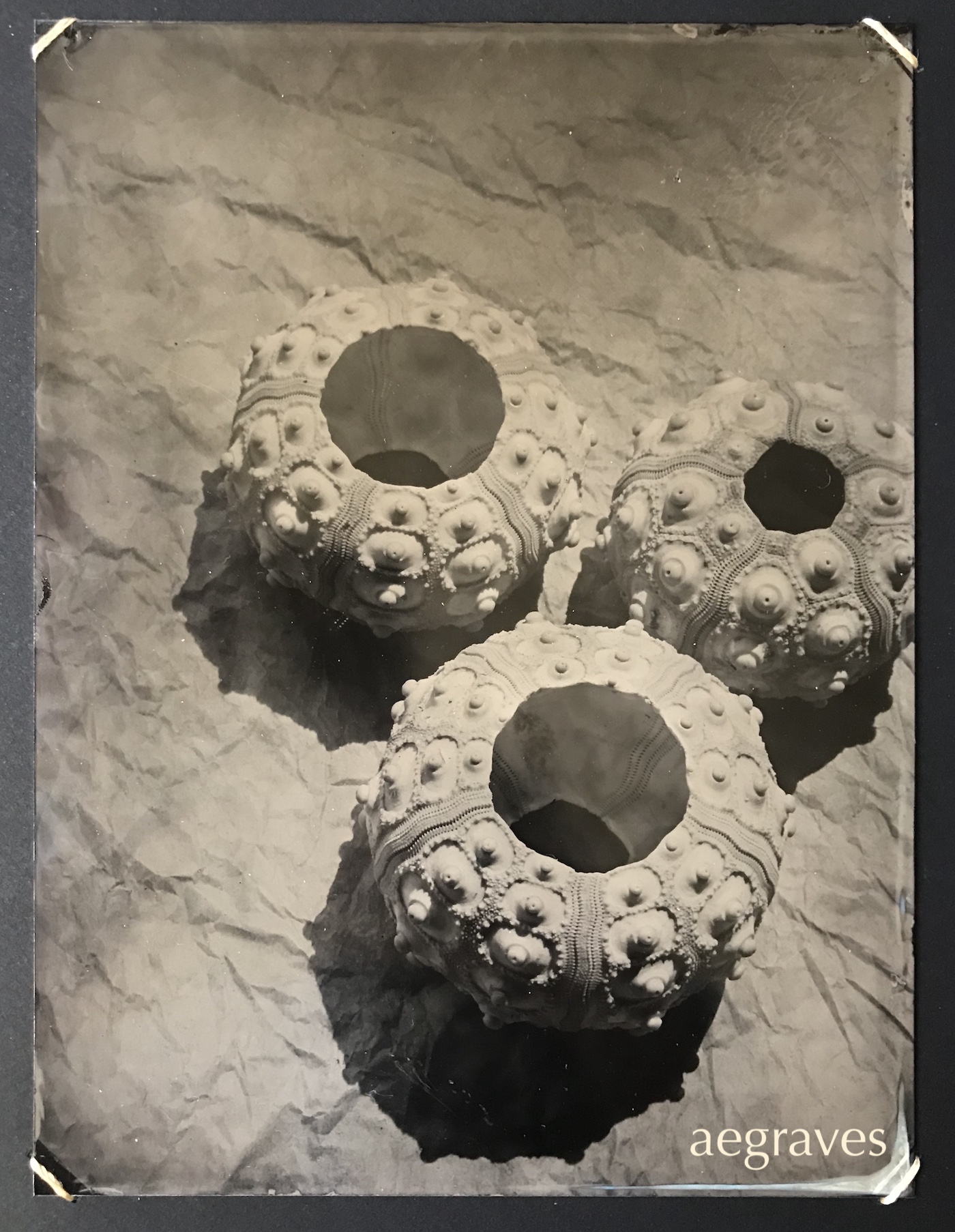
These images were made through a challenging process which was invented in 1851 by Frederick Scott Archer. The wet plate collodion process involves mixing and pouring a volatile liquid emulsion onto metal or glass plates, sensitizing the moist plate in a silver nitrate solution in a darkroom, loading the wet plate into a light-proof film holder, exposing it in a large format camera for several minutes, and developing and fixing it in a darkroom, all before it has a chance to dry.
Wet plate collodion produces grainless, unique images which appear to be positive if created on a dark background. Collodion can be used on transparent glass to produce glass plate negatives, or on opaque surfaces to yield remarkable, one-of-a-kind positive "prints."
If the plate is made of metal, it is referred to as a ferrotype. (Tintypes fall into this category; some contemporary artists call the current form "aluminotypes.") If the plate is glass, it is called an ambrotype.
The plates in the bodies of work called Tea Set, Winter Squash, Blow, and Protea are each about 4 inches by 5 inches in size. Plates of sea skeletons and shells (such as the example above), as well as technological subjects previously on view at Jack Fischer Gallery from 2009 through early 2013, are six inches by eight inches.
Read my notes about my technology ferrotypes here.
Read my notes about my ferrotypes of glass liquor bottles here.
Copyright © 2005 - 2020 A. E. Graves